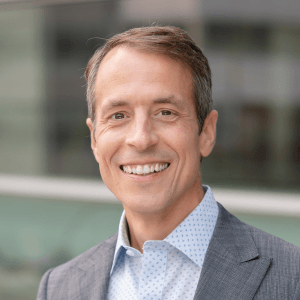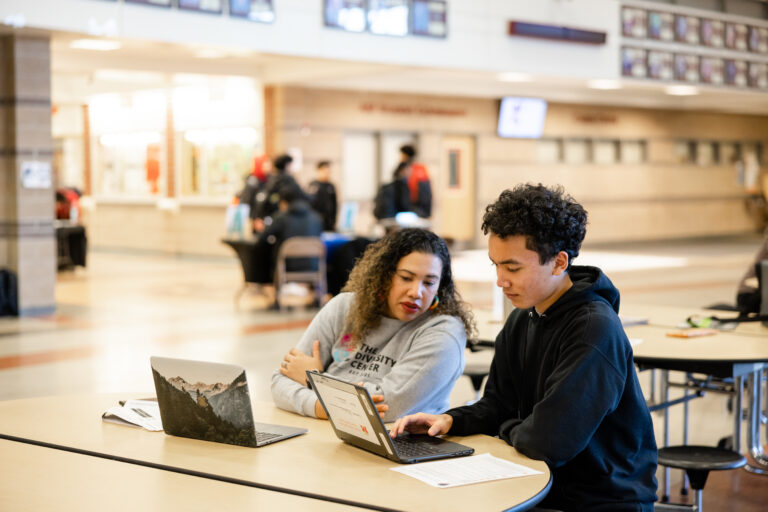
Ben Mitchell
Director of Advocacy & Policy, Foundation for Tacoma Students
Our team at the Foundation for Tacoma Students recently wrapped-up a qualitative research project focused on the efficacy and opportunities for improvement to an aspect of our state’s requirements for high school graduation: the High School and Beyond Plan.
Through a series of focus groups with educators, students and parents key themes emerged that characterized the High School and Beyond Plan as a tool that has potential to be meaningful, but that is often experienced as more of a “check-the-box” exercise. In this sense the High School and Beyond Plan is like a lot of policy that exists in an idealized form in legislation or statutes, but that then crashes against the shores of under-resourced implementation.
We must give students an on-ramp to education after high school
Today, most good jobs—those that provide a living wage—require some form of career-connected education after high school. This is true at a national level and even more so in Washington, as laid out in a recent report from the Washington Student Achievement Council that found that our state is ranked 5th among the top states for the share of jobs requiring postsecondary education.
Given this, it is crucial that we dramatically increase the number of Washington students who go on to obtain a college degree or credential after high school. Work in this area should be guided by the goal to build stronger connections between our education and workforce systems, and to ensure that every Washington high school student graduates with not just a high school diploma, but with a clear and specific onramp to some sort of high quality education or training program after high school. When you hear the phrase “postsecondary pathways,” this is what we’re talking about.
Tools can help, but a tool is only as good as the context around it
Achieving this lofty goal is not easy and it will take a variety of strategies, interventions, and tools that work well together and complement each other in order to get there. One such tool we have in place in Washington is the High School and Beyond Plan. These plans boil down to an on-line or hard copy document, but the broader idea is less about a specific format and more about a multi-year process that lays out students’ educational and career goals.
The High School and Beyond Plan process is intended to start in middle school where students work with advisers and parents to think about their plans for high school courses. From there the plan is supposed to be revisited throughout a students’ high school years to reflect their changing interests and goals.
The specifics around the “how” of the high school and beyond plan process – in terms of time, staffing, and other resources – is intentionally left up to individual school districts. Our research examined the on-the-ground implementation dynamics and realities of the High School and Beyond Plan through focus groups with 42 participants from across Pierce and King counties. Our core finding is that the High School and Beyond Plan can be an effective tool to provide students with the opportunity to explore their skills, interests, and discover potential career and educational options. But it is only that: A tool.
Five core themes emerged from our research:
Theme #1 – The High School and Beyond Plan should ensure that all students, regardless of their unique circumstances, skills, and interests, are equipped with the knowledge and resources to thoughtfully explore a variety of post-high school options and pursue their individual aspirations. While obtaining a two-year or four-year college degree is a strong predictor of long-term economic stability, these are not the only meaningful postsecondary pathways available to students, and participants felt that the plan may overly emphasize college preparation. Relatedly, some participants felt that their child had been ‘put in a box’ or ‘labeled’ due to the plans’ rigid and prescriptive components.
Theme #2 – The High School and Beyond Plan lacks meaningful components and is not implemented with sufficient rigor and fidelity, causing it to be perceived as merely a ‘checkbox’ requirement. Participants noted that the current implementation of the High School and Beyond Plan is fragmented, with inconsistencies in its application and rigor. A common experience is that completing the plan is put off until a students’ senior year, with a resulting sense of urgency to “just get it done.”
Theme #3 – The High School and Beyond Plan lacks the necessary staffing and resources for successful implementation, resulting in challenges in delivering the individualized support that students need. College and career counselors juggle large caseloads and competing mandates. Trusted and expert advice from adults whose sole purpose is to help students identify a strong postsecondary pathway option is not as prevalent as it needs to be.
Theme #4 – The High School and Beyond Plan should be a collaborative effort involving students, district administration, school staff, family, and community input for its design, implementation, and evaluation. Parents want to know more and want to know earlier about the plan. School staff want better coordination between district administration, Career and Technical Education programs, and building staff. Community partners want to see more opportunities to connect directly with youth. Young people–both still in school and already in the workforce– want to know that their varied interests, multiple pathway options, and crucial feedback is included in the plan.
Theme #5 – Communication of the High School and Beyond Plan should ideally begin as early as middle school, and its components and purpose should be clearly communicated to everyone involved. The schools and districts where the plan is best implemented put an emphasis on early and clear communication about the plan, and link the various pieces together over a student’s academic career.
The takeaway: we need to invest more in college and career advising
To realize the potential of the High School Beyond Plan as a powerful and functional tool, Washington needs to prioritize increasing investments in effective postsecondary advising roles and supportive relationships. These professionals help students to successfully explore career opportunities, navigate onto a postsecondary pathway, attain a degree or credential, and launch into a successful career. The High School and Beyond Plan itself offers a solid framework and process that should be utilized to support this work.
With that understanding, we’ve offered the following set of broad areas for state and local-level policy reflection. In putting these forward, we acknowledge that many of these recommendations – or at least aspects of them – are in fact being exhibited by local districts or in areas of state governance. Our point here is to put forward a complimentary package of ideas that work well together, and to encourage reflection and benchmarking against these ideas to pick out priorities for policy change and new funding.
Recommendation #1 – K-12 system leaders at the state and local level should publicly commit to students’ postsecondary success. Goals and public commitments are useful for focusing collective energy. When done right, it’s an expression of partnership and shared commitment by leaders from across sectors to observable outcomes that demonstrates wide buy-in and shared accountability.
Recommendation #2 – School districts should set strategy and allocate resources to reach postsecondary goals. Downstream of goal setting are strategic plans, annual planning, and budgeting processes that should detail strategies to reach postsecondary success goals and commitments.
Recommendation #3 – K-12 system leaders at the state and local level should collaborate to ensure that schools have capacity to support students. K-12 education governance is decentralized from the state to the local level by design, but state leaders can and should look for ways to offer authoritative guidance to school districts. Examples include lifting up how adjustments to the school calendar and daily schedule can increase the amount of effective advising students receive. Advocating for state investments in professional development for district and school-based staff. Supporting schools in creating a college, career and life readiness culture and curriculum.
Recommendation #4 – School districts, postsecondary institutions, and community partners should work together to build plans and manage implementation. School districts should not be left to shoulder the work of building post-high school onramps by themselves. Students will be best served when districts, postsecondary institutions, and other community partners work together to align strategies, goals, and clear expectations for their respective roles.
Recommendation #5 – K-12 system leaders at the state and local level and educators should use real-time data to continuously improve postsecondary advising. System leaders should regularly review disaggregated student data, and document improvement cycles to address gaps and disparities.
Treat the cause, not the symptoms
A hard thing about policy is to find the sweet spot of problem identification where your work is focused on real underlying issues, and not small expressions of bigger problems, but also not giant abstractions that don’t lend themselves to policy. Our recent project was nominally about improving the High School and Beyond Plan, but what rang through the research was that while tweaks to the High School and Beyond Plan framework may represent marginal improvements, the deeper issue is that we need to put more resources into college and career advising that serves to bridge the gap between high school, higher education, and workforce systems.




